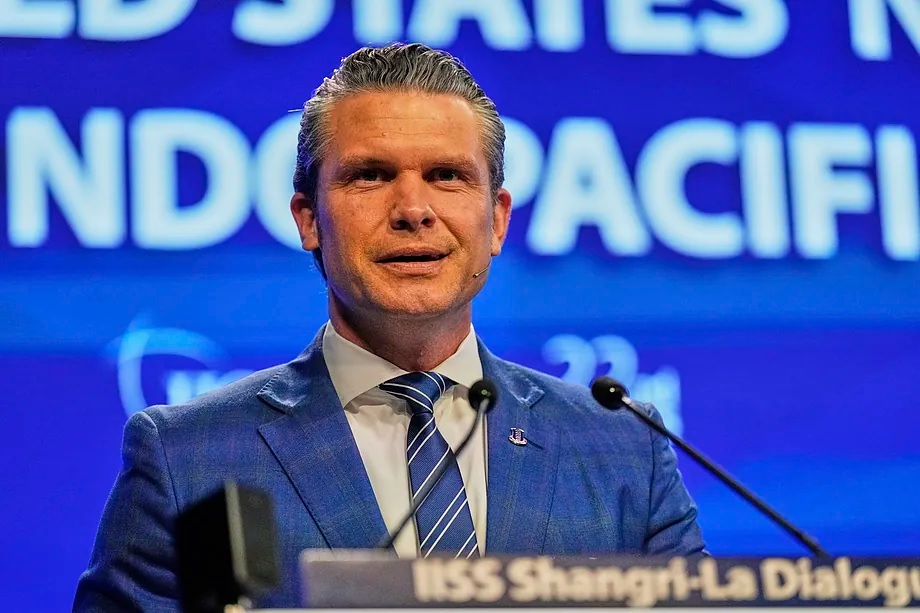During the exchange of attacks in May between India and Pakistan, the Pakistani army boasted that its JC-10 fighter jets, manufactured in China, had shot down several Indian Rafale fighter jets, of French manufacture. In the mountains of the disputed region of Kashmir, the Pakistanis bombed Indian positions with long-range PL-15 missiles, also made in China, a country that supplies over 80% of the weapons imported by Islamabad.
That was the first time the world saw these cutting-edge Chinese weapons deployed in actual combat. Western powers, especially the United States, took careful note and analyzed every detail of the confrontation, aware that Beijing's military development had been crucial for its ally Pakistan, with a much inferior military force compared to India, to withstand the exchange of attacks with the neighboring country before both agreed to a ceasefire.
The rise of China's military muscle is a major concern in Washington and has been one of the most relevant issues being discussed at the Shangri-La Dialogue, the major Asia-Pacific military forum that kicked off on Friday at a luxurious hotel in Singapore with the presence of Defense Ministers, generals, and high officials from 47 countries. The most anticipated event was the intervention of the US Secretary of Defense, Pete Hegseth, who made his highly anticipated first public statements on the security policy that the Trump administration will follow in the region.
Hegseth surprised by deploying a much more aggressive and vehement narrative to point out that the threat from China is real, while urging his allies in the region to increase their defense spending and not rely so much on Washington's protection. "There is no reason to sugarcoat it. The threat posed by China is real and could be imminent," he stated. "It must be clear to everyone that Beijing is credibly preparing to potentially use military force to alter the balance of power in the Indo-Pacific," he continued.
The US Secretary stated that its Asian allies should take as an example the European countries, citing NATO members' promises to move towards Trump's 5% of GDP spending target. "Deterrence is not cheap," he emphasized. Regarding his country's strategy in the region, Hegseth revealed that the USA was "reorienting towards deterring aggression from communist China" because Asia is "the primary theater of operations" for Washington. "We are committed to ensuring that China cannot dominate us, nor our allies and partners," he concluded.
US officials have indicated that Hegseth's purpose is to convince his Asian colleagues that the US is a much more reliable partner than China. A message that has not resonated with most countries in the region, who are equally or more concerned about Trump's trade war and his unpredictable diplomacy than China's assertiveness in hotspots like Taiwan or the disputed islands in the South China Sea.
"Trump's actions have eroded the moral legitimacy of the US and are changing its image in Asia from liberator to a major disruptor and global landlord," said Singapore's former Defense Minister Ng Eng Hen earlier this year. "Trump's coercive tactics and his increasing pressure on the international order, created by the US itself, are leading global politics down a dangerous path. Unconsciously, we are heading towards a lawless world," criticized José Ramos-Horta, President of East Timor, who highlighted the soft power vacuum left by Trump in the region after suspending USAID development assistance programs.
But unlike Trump's abrupt shifts in his defense agenda towards Europe, with his threats to withdraw from NATO and abandon Ukraine in its fight against Russia's invasion, it seems that Washington's defense role in the Asia-Pacific region maintains the line of previous US administrations, focused on further strengthening ties with its traditional allies to counterbalance Chinese influence.
"The United States is here and is not going anywhere. We are here to deter adversaries seeking to harm us," Hegseth stated on Friday in a speech in front of marines aboard a US Navy ship in Singapore.
In recent years, the Shangri-La Dialogue has attracted international attention for being one of the few scenarios where military leaders from the two superpowers meet. However, unlike other occasions, Beijing has not sent its Defense Minister to Singapore. The Chinese delegation is composed of senior military officials who have held meetings with representatives from other Asian nations, the United States, and guests from the United Kingdom, Germany, and France.
As in every Asian military forum, the situation of Taiwan, the autonomous island that China considers part of its territory, is one of the most delicate topics to address during the meeting. Beijing continues to pressure Taipei with frequent invasion drills while its major international supporter, the US, continues to help strengthen the island's defenses. However, unlike the previous administration, the Trump administration has not yet stated whether it would defend Taiwan in the event of a Chinese attack.
During his appearance at the forum, Hegseth quoted Trump as saying that China will not invade Taiwan during his term, but any action in that direction "would have devastating consequences for the Indo-Pacific and the world."
Another critical issue to discuss in Singapore is the nuclear threat from North Korea. A couple of months ago, North Korean media released images of Kim inspecting the first nuclear-powered submarine under construction, a weapon system weighing between 6,000 and 7,000 tons with the capacity to carry around a dozen missiles. When news of the submarine came out, many analysts doubted that such an isolated, sanctioned, and impoverished country like North Korea could have obtained the resources to build such a powerful weapon without technological assistance from its ally in Moscow.
